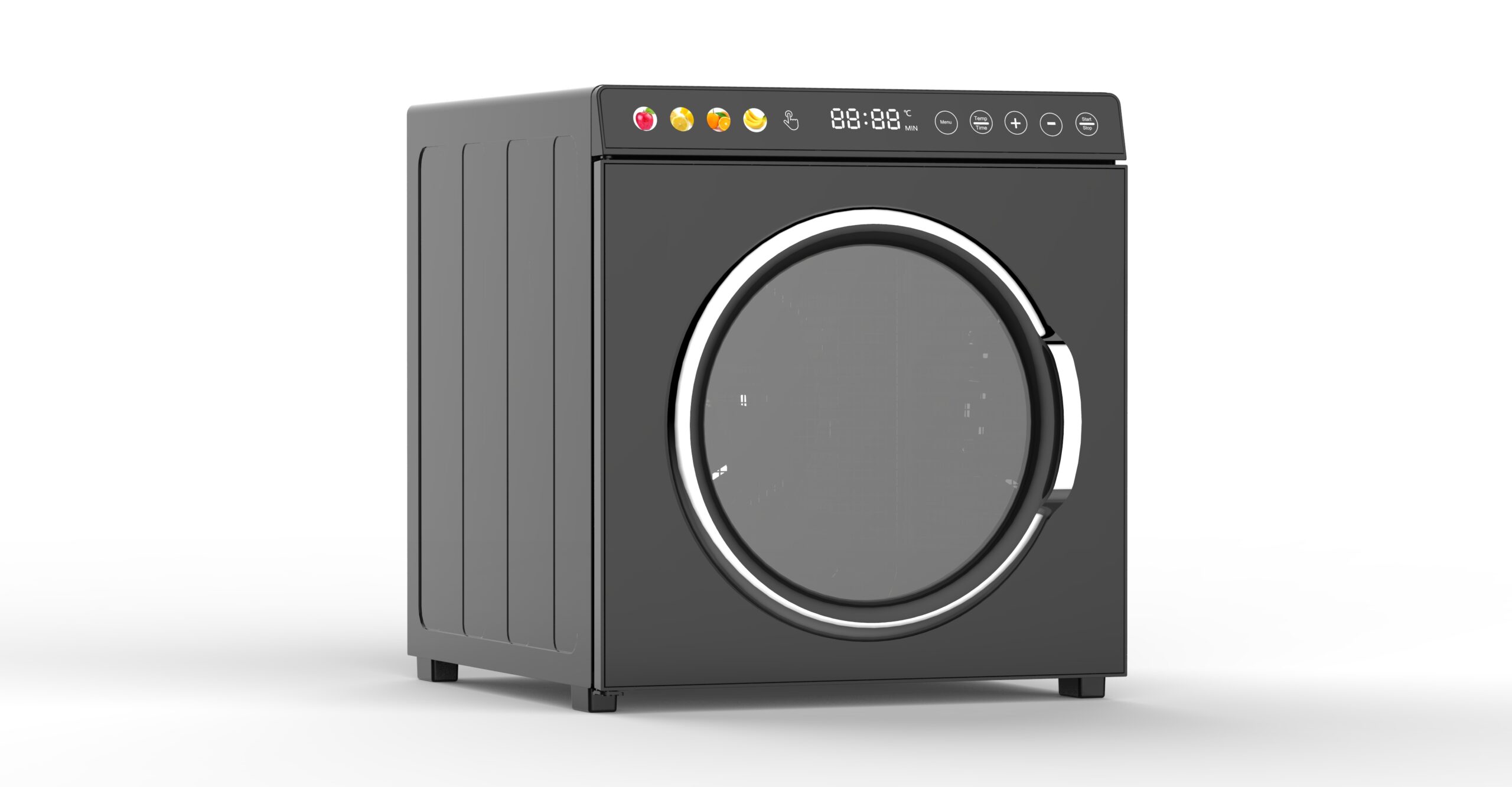Introduction to Vegetable Dehydration
Hi there. I’m Steven. As the Sales Manager at Foshan Linden Intelligent Appliances Co., Ltd., I’ve spent years helping businesses source top-quality kitchen appliances. We specialize in food dehydrators. Today, I want to share my expertise on dehydrating vegetables.
Dehydrating vegetables is simple. It’s rewarding too. You preserve nutrients. You create healthy snacks. And you build meals that last.
Many beginners start with a food dehydrator. It’s efficient. It’s easy. Our factory produces reliable models. They suit B2B needs. But this guide is for everyone.
Why focus on vegetables? They’re packed with vitamins. Dehydration keeps most of that goodness. Let’s dive in.
Why Dehydrate Vegetables: Key Health Benefits
Dehydrating vegetables offers big advantages. First, it preserves nutrition. Studies show dehydrated veggies retain vitamins and minerals. Unlike canning, dehydration avoids high heat loss.
I love how it concentrates flavors. Carrots become crunchy chips. Zucchini turns into light snacks.
Health-wise, dehydrated vegetables boost fiber intake. Fiber aids digestion. It supports heart health. They’re low in calories too.
Compared to fresh, dehydrated versions last longer. No spoilage worries. Research confirms they keep antioxidants well.
At our company, we see clients use them for healthy meals. It’s versatile. Add to soups. Mix in salads.
One more benefit: portability. Perfect for hikes. Or busy days.
Choosing the Best Food Dehydrator for Vegetable Dehydration
Picking a food dehydrator matters. As an expert, I recommend quality. Look for even airflow. Adjustable temperatures are key.
Our food dehydrators at Foshan Linden come with multiple trays. They’re built for efficiency. We offer OEM and ODM services. Custom features like timers help.
For beginners, start simple. A basic model works. Ensure it reaches 125°F to 140°F. That’s ideal for vegetables.
Avoid cheap ones. They unevenly dry. Invest in durability. Our factory has three production lines. We export to North America and Europe.
Size counts too. If you’re dehydrating lots, go bigger. Think about energy use. Efficient models save money.
I always tell clients: test it first. Dehydrate a small batch. See the results.
Preparing Vegetables for Dehydration: Essential Steps
Preparation is crucial. I can’t stress this enough.
Start with fresh vegetables. Wash them thoroughly. Remove dirt. Pat dry.
Slice evenly. Aim for 1/8 to 1/4 inch thick. Uniformity ensures even drying.
Blanch some veggies. Like broccoli or carrots. It preserves color. And nutrients.
For leafy greens, remove stems. Chop if needed.
Season lightly. Herbs add flavor. But keep it simple for versatility.
Arrange on trays. Don’t overlap. Air needs to circulate.
I recommend pre-treating. Lemon juice prevents browning on light veggies.
Step-by-Step Guide to Dehydrating Vegetables in a Food Dehydrator
Let’s break it down. Step by step.
Step 1: Plug in your food dehydrator. Set the temperature. Usually 125°F for veggies.
Step 2: Load trays. Place sliced vegetables. Single layer only.
Step 3: Turn it on. Let it run. Check after 4 hours.
Step 4: Rotate trays. For even drying. Our models have fans for this.
Step 5: Test doneness. Veggies should be leathery. Or brittle. No moisture.
Step 6: Cool them. Then store.
It’s that easy. I do this at home. Saves time. And money.
For frozen veggies, thaw first. They’re pre-blanched. Super convenient.
Optimal Temperatures and Times for Dehydrating Different Vegetables
Temperatures vary. So do times.
For carrots: 125°F. 6-10 hours. Slice thin.
Broccoli: 125°F. 4-8 hours. Florets work best.
Zucchini: 135°F. 5-7 hours. Chips are fun.
Onions: 145°F. 6-8 hours. They shrink a lot.
Leafy greens like kale: 115°F. 3-5 hours. Low heat preserves nutrients.
Tomatoes: 135°F. 8-12 hours. Great for sun-dried taste.
Always monitor. Humidity affects times.
I advise starting low. Increase if needed. Our dehydrators have precise controls.
Storing Dehydrated Vegetables for Long-Term Use
Storage is key. Do it right. They last years.
Use airtight containers. Glass jars. Or vacuum bags.
Keep cool. Dark place. Away from light.
Label them. Date and type.
Check moisture. If any, re-dehydrate.
I store mine in the pantry. Easy access for meals.
Proper storage retains nutrition. Up to 90% of fresh value.
Creative Recipes Using Dehydrated Vegetables for Healthy Meals
Now, the fun part. Recipes.
First, veggie chips. Dehydrate zucchini. Season with salt. Healthy snack.
Soup mix: Mix dried carrots, onions, celery. Rehydrate in broth. Nutritious soup.
Stir-fry: Rehydrate peppers and broccoli. Add to wok. Quick meal.
Trail mix: Combine dried veggies with nuts. Energy boost.
Casserole: Layer dehydrated potatoes. Bake with cheese. Comfort food.
Powder them. Blend dried veggies. Use as seasoning. Boost flavor.
I make veggie powder often. Adds vitamins to smoothies.
Another idea: Dehydrated veggie omelet. Rehydrate. Mix in eggs.
For salads: Crunchy topping. Dried beets shine.
These keep meals healthy. Low fat. High fiber.
Common Mistakes and Tips for Beginners in Vegetable Dehydration
Beginners make errors. I’ve seen them all.
Mistake: Overloading trays. Air can’t flow.
Tip: Space out slices.
Mistake: Wrong temperature. Too high burns.
Tip: Use a thermometer. Stick to guidelines.
Mistake: Not blanching. Colors fade.
Tip: Blanch greens. 2-3 minutes.
Experiment. Try new veggies.
Clean your dehydrator. After each use.
Start small. Build confidence.
I tell new users: Patience pays off.
Safety first. Ensure dryness to avoid mold.
Advanced Tips for Customizing Your Food Dehydrator Experience
Go beyond basics. Customize.
Our models allow accessories. Like extra trays.
Try marinades. Before drying. Flavor infusion.
Mix veggies. Create blends.
For OEM clients, we customize settings.
Monitor humidity. Use a hygrometer.
Dehydrate in batches. Save energy.
I innovate with herbs. Mixed with veggies.
The Nutritional Edge: Dehydrated vs. Fresh Vegetables
Dehydrated wins on shelf life. Nutrition is close.
Fresh loses nutrients over time. Dehydrated locks them in.
Vitamins A and C stay high. If dried properly.
Fiber increases per serving. Water’s gone.
Calories concentrate. Portion control matters.
I prefer dehydrated for travel. Same health punch.
Studies back this. Retention up to 95%.
Integrating Dehydrated Vegetables into Daily Healthy Meals
Make it habit. Add to breakfast. Oats with dried carrots.
Lunch: Salads with crunchy bits.
Dinner: Stews. Rehydrate fast.
Snacks: Standalone chips.
For families, it’s easy nutrition.
I use them daily. Keeps me energized.
Versatile for diets. Vegan. Keto.
Conclusion: Start Your Vegetable Dehydration Journey Today
There you have it. A full guide.
Dehydrating vegetables is empowering. Healthy. Fun.
As Sales Manager, I’m passionate about our food dehydrators. Visit www.lindensmart.com for more.
Questions? Email me at sales1@fslinden.com.
Start small. Enjoy the process.
Happy dehydrating!





